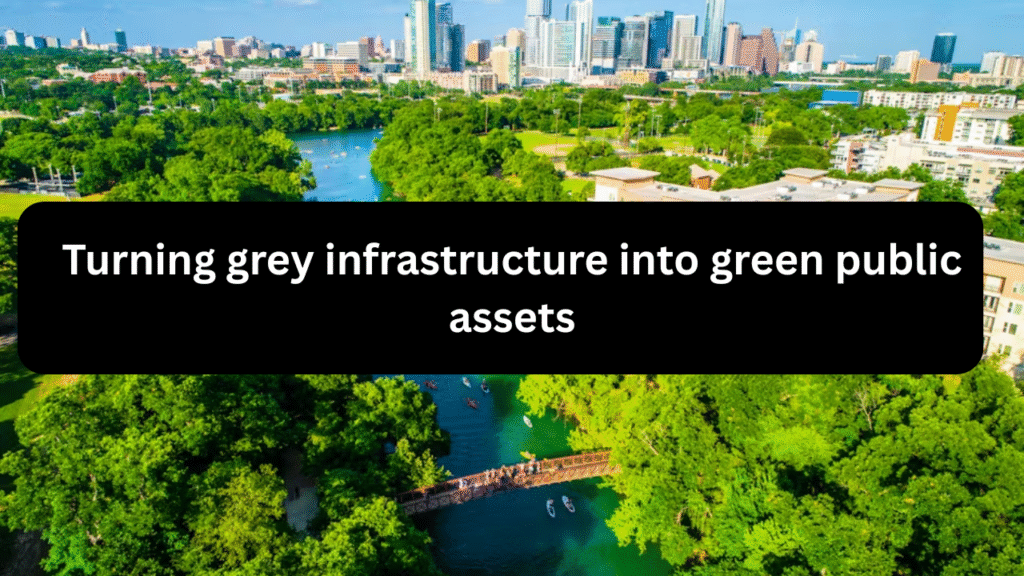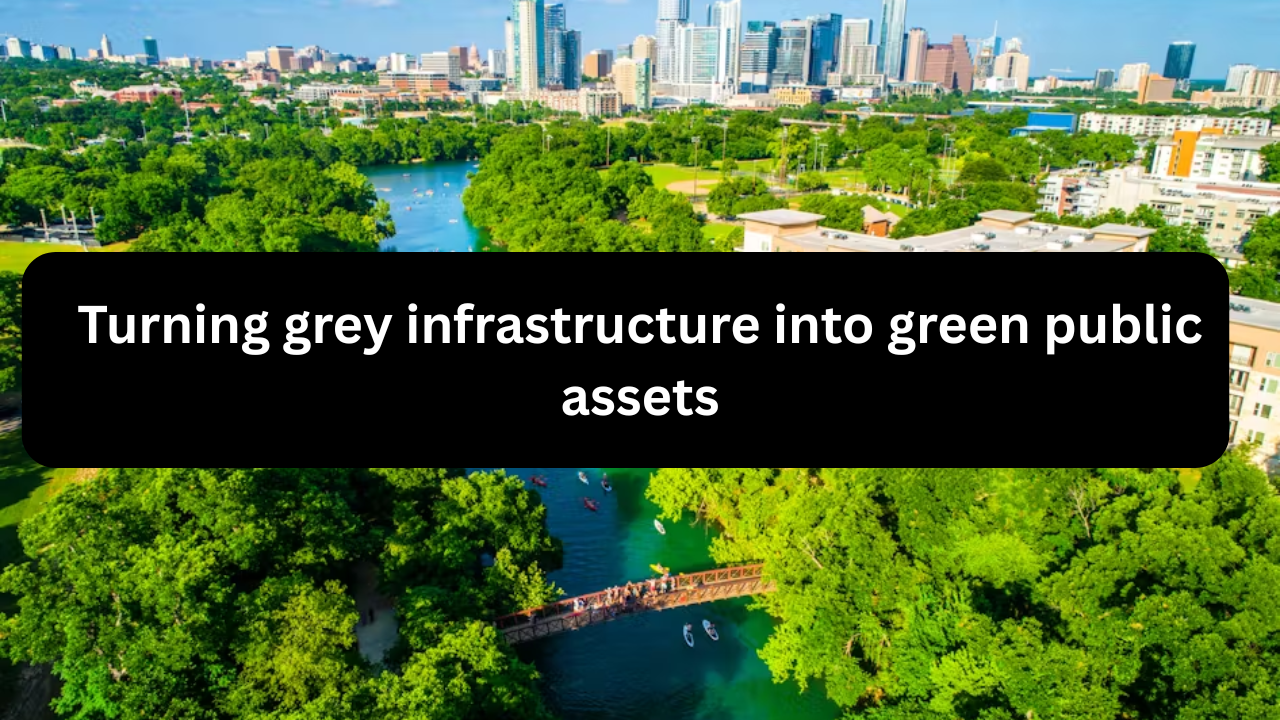
Introduction
Cities worldwide are rethinking the way they design and use infrastructure. Grey infrastructure—roads, bridges, parking lots, and drainage systems—has long been functional but environmentally passive, often contributing to urban heat islands, poor air quality, and stormwater runoff problems. The concept of turning grey infrastructure into green public assets is about reimagining these hard, impervious spaces into vibrant, sustainable, and accessible community areas that serve both ecological and social needs.
Why Transformation is Needed
Grey infrastructure is essential for transport, water management, and urban connectivity. However, it often:
- Lacks ecological value
- Consumes large surface areas
- Increases stormwater runoff and flooding risks
- Fails to provide public recreational or community benefits
The transformation into green assets aims to:
- Improve biodiversity
- Enhance urban resilience to climate change
- Boost public health through cleaner air and accessible green spaces
- Strengthen community interaction and economic activity
Key Approaches to Transformation
1. Green Roofs and Vertical Gardens
Installing vegetation on rooftops or building facades reduces heat absorption, improves insulation, and manages rainwater. Vertical gardens can also serve as aesthetic focal points in dense urban areas.
2. Permeable Pavements and Bioswales
Replacing asphalt with permeable materials allows rainwater to infiltrate naturally, reducing the load on stormwater systems. Bioswales—vegetated channels—filter pollutants and slow water flow.
3. Repurposing Parking Lots into Parks
Underused parking areas can be converted into mini-parks, community gardens, or outdoor markets, bringing greenery and economic vibrancy to formerly sterile spaces.
4. Green Bridges and Urban Wildlife Corridors
Retrofitting bridges and elevated roadways with vegetation creates safe pathways for wildlife and enhances ecological connectivity between fragmented green spaces.
5. Daylighting Urban Streams
Uncovering and restoring buried waterways not only revives aquatic ecosystems but also offers attractive recreational zones along the banks.
Benefits of Grey-to-Green Transformation
| Benefit Area | Key Impact | Example Implementation |
|---|---|---|
| Environmental | Reduces heat island effect | Green roofs on municipal buildings |
| Social | Improves public health | Walking trails in converted spaces |
| Economic | Increases property values | Streetscape greening |
| Climate Resilience | Manages stormwater naturally | Bioswale installations |
| Biodiversity | Creates habitats | Pollinator gardens in medians |
| Cultural Engagement | Supports community activities | Outdoor art spaces in converted lots |
Case Studies
1. Seoul’s Cheonggyecheon Stream Restoration (South Korea)
Once a buried drainage channel under a highway, the stream was restored into a 10.9 km green corridor, reducing local temperatures and revitalizing downtown Seoul.
2. New York’s High Line (USA)
An abandoned elevated railway turned into a lush public park, blending art, design, and greenery, attracting millions of visitors each year.
3. Rotterdam’s Water Squares (Netherlands)
Formerly underused paved areas redesigned to collect stormwater during heavy rains while serving as public plazas during dry weather.
Implementation Challenges
- Funding Constraints – Requires significant investment, though long-term benefits outweigh costs.
- Maintenance Needs – Green infrastructure requires ongoing care and monitoring.
- Stakeholder Coordination – Urban planners, environmentalists, and local communities must align objectives.
- Policy and Regulatory Barriers – Zoning laws and construction codes may need revision to enable green transformations.
Strategies for Successful Transition
- Policy Integration – Embed green infrastructure goals into urban planning policies.
- Community Engagement – Involve residents in the design and upkeep of green spaces.
- Public-Private Partnerships – Leverage corporate investment and sponsorships.
- Phased Implementation – Start with pilot projects to demonstrate feasibility.
- Monitoring and Evaluation – Track environmental, social, and economic benefits to guide future projects.
Overview Table
| Aspect | Grey Infrastructure State | Green Public Asset Transformation |
|---|---|---|
| Surface Type | Impermeable (asphalt, concrete) | Permeable, planted, vegetated |
| Ecological Value | Low | High – supports biodiversity |
| Climate Resilience | Poor stormwater management | Natural water retention & cooling |
| Social Engagement | Minimal | Active community participation |
| Aesthetic Appeal | Functional, unattractive | Inviting, visually appealing |
| Economic Benefit | Limited | Boosts tourism, property value |
Conclusion
Transforming grey infrastructure into green public assets is more than an environmental trend—it’s an urban necessity. By reimagining hard, underutilized spaces as ecologically rich and socially engaging environments, cities can combat climate change, improve residents’ quality of life, and build resilience for the future. The key is long-term vision, community buy-in, and smart investment.
3 Quick FAQs
Q1: What is the main goal of turning grey infrastructure into green assets?
A: To improve environmental sustainability, social well-being, and climate resilience by repurposing hard, underutilized spaces.
Q2: Does green infrastructure save money in the long run?
A: Yes, through reduced stormwater management costs, increased property values, and lower healthcare expenses from improved air quality.
Q3: Can small cities also implement grey-to-green projects?
A: Absolutely—smaller-scale interventions like pocket parks and rain gardens can have big local impacts.

